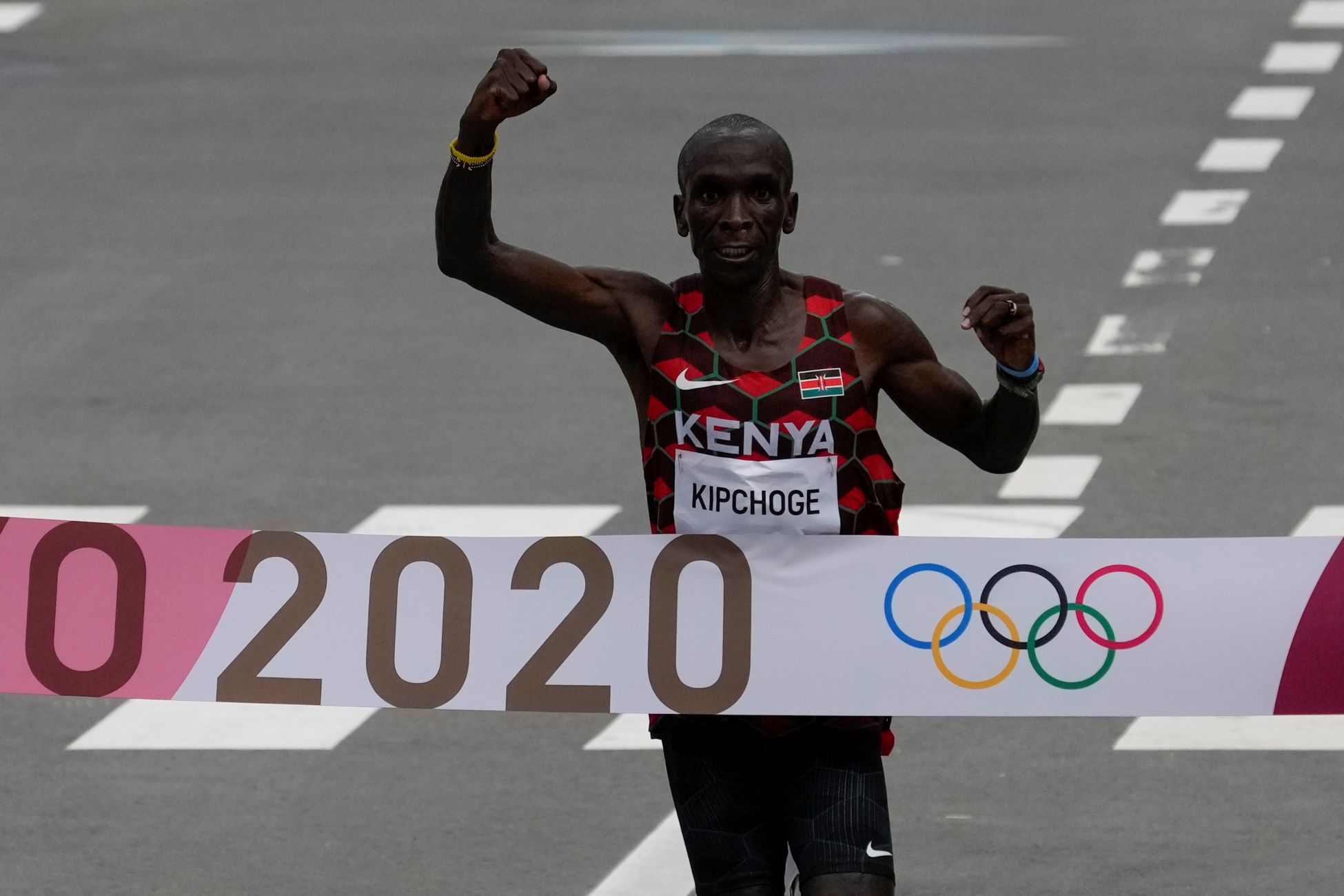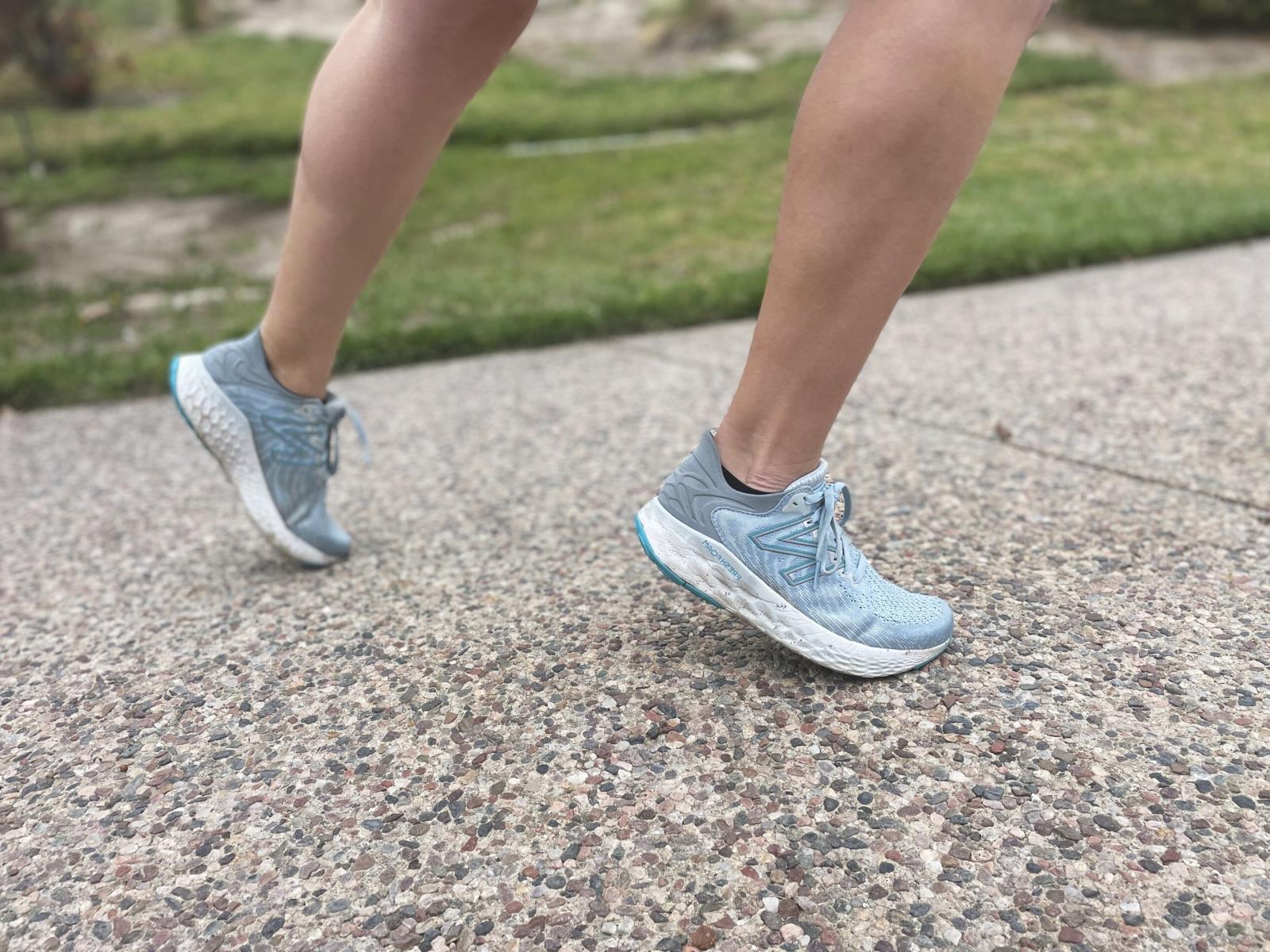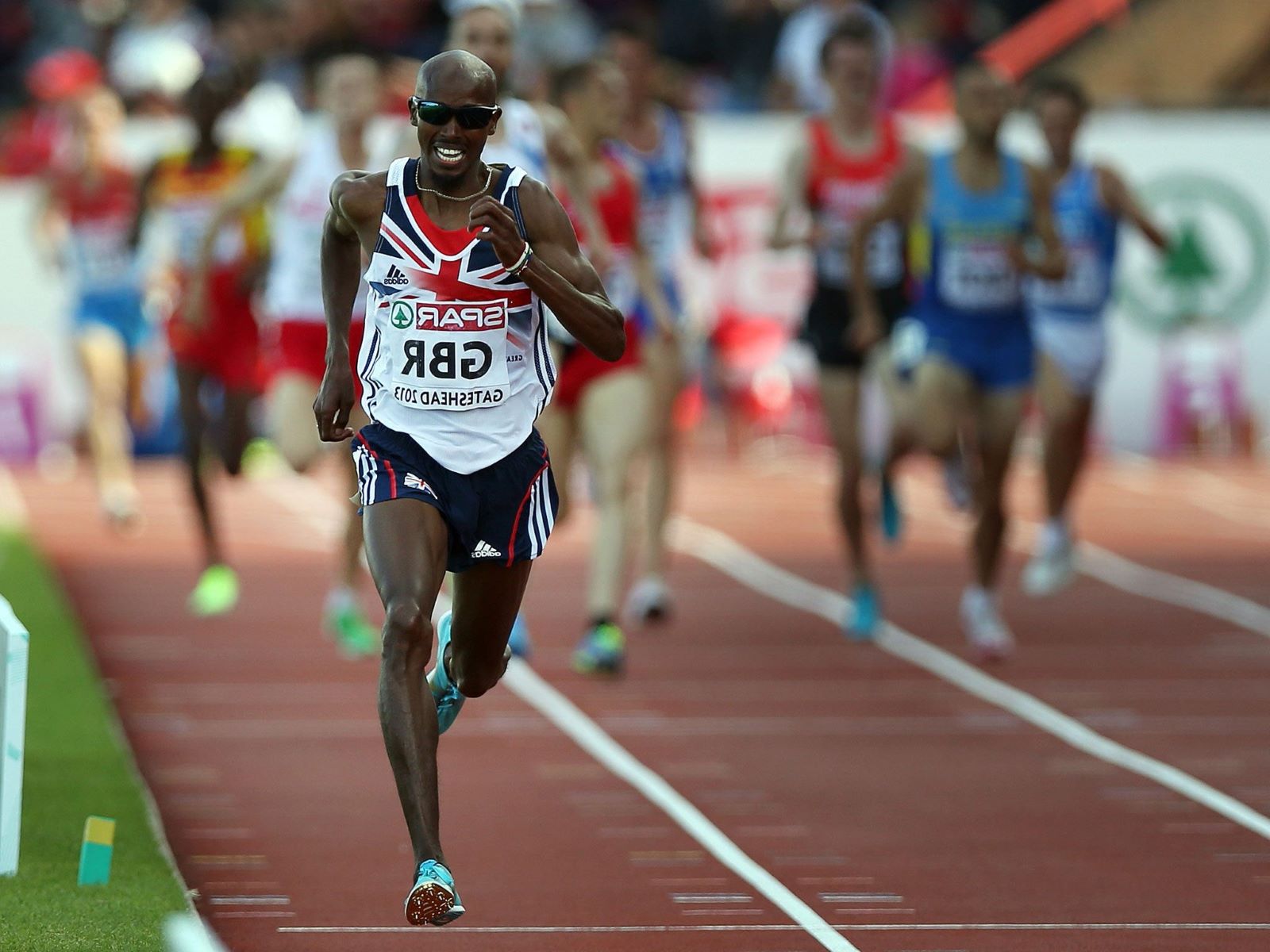Home>Health & Nutrition>Does Running Help You Achieve Abs?


Health & Nutrition
Does Running Help You Achieve Abs?
Published: February 25, 2024
Discover how running can contribute to achieving abs and improving overall health and nutrition. Learn the benefits of running for your fitness goals.
(Many of the links in this article redirect to a specific reviewed product. Your purchase of these products through affiliate links helps to generate commission for Therunningadvisor.com, at no extra cost. Learn more)
Table of Contents
The Benefits of Running for Overall Fitness
Running is a fantastic way to improve your overall fitness and well-being. It offers a myriad of benefits that extend beyond just cardiovascular health. Here are some of the key advantages of incorporating running into your fitness routine:
-
Cardiovascular Health: Running is a highly effective cardiovascular exercise that gets your heart pumping and your blood flowing. It strengthens your heart, improves circulation, and enhances your overall cardiovascular endurance. Regular running can help reduce the risk of heart disease, lower blood pressure, and improve cholesterol levels.
-
Weight Management: Running is an excellent way to burn calories and shed excess pounds. It is a high-impact exercise that engages multiple muscle groups, making it an efficient calorie-burning activity. Whether you're aiming to lose weight or maintain a healthy weight, running can be a valuable component of your fitness regimen.
-
Mental Well-being: Engaging in regular running can have a profound impact on your mental health. It is known to alleviate stress, reduce anxiety, and combat depression. The release of endorphins during running can elevate your mood and contribute to a sense of overall well-being.
-
Bone Strength: Running is a weight-bearing exercise that can help strengthen your bones and reduce the risk of osteoporosis. The impact of running stimulates bone growth and enhances bone density, particularly in the lower body.
-
Improved Sleep: Regular physical activity, such as running, can promote better sleep patterns. It can help you fall asleep faster and enjoy deeper, more restorative sleep, leading to improved overall energy levels and cognitive function.
-
Enhanced Immune System: Engaging in moderate-intensity running has been linked to a bolstered immune system. Regular runners often experience fewer minor illnesses and have a reduced risk of developing certain chronic diseases.
Incorporating running into your fitness routine can yield a wide array of benefits that extend far beyond physical fitness. Whether you're aiming to improve your cardiovascular health, manage your weight, boost your mood, or enhance your overall well-being, running can be a valuable and rewarding addition to your lifestyle.
The Role of Cardiovascular Exercise in Achieving Abs
When it comes to achieving well-defined abs, cardiovascular exercise plays a pivotal role in sculpting and revealing the coveted six-pack. While many individuals focus solely on targeted abdominal workouts to attain a chiseled midsection, incorporating cardiovascular exercise, such as running, into your fitness routine is essential for achieving visible and defined abs.
Cardiovascular exercise, including running, contributes to the reduction of overall body fat, which is crucial for unveiling the abdominal muscles. While spot reduction is a common misconception, engaging in regular cardiovascular activities can lead to a decrease in body fat percentage, ultimately revealing the underlying muscle definition, including the abdominal region. Running, as a high-impact cardiovascular exercise, effectively burns calories and accelerates fat loss, particularly in the abdominal area.
Moreover, cardiovascular exercise promotes a heightened metabolic rate, leading to increased calorie expenditure both during and after the workout. This elevated calorie burn aids in reducing overall body fat, including the adipose tissue that often obscures the abdominal muscles. As a result, consistent engagement in cardiovascular activities, such as running, can contribute to the gradual unveiling of a more defined and sculpted midsection.
In addition to its fat-burning benefits, cardiovascular exercise, particularly running, enhances overall core strength and stability. While running primarily engages the lower body, it also necessitates core activation to maintain proper posture and form. The continuous engagement of the core muscles during running strengthens the abdominal region, contributing to improved muscle tone and definition.
Furthermore, the cardiovascular benefits of running extend beyond fat loss and core strengthening. Improved circulation and blood flow resulting from regular running can aid in the delivery of oxygen and nutrients to the muscles, including the abdominal muscles. This enhanced blood flow supports muscle recovery and growth, facilitating the development of a more defined and well-conditioned midsection.
In essence, incorporating cardiovascular exercise, such as running, into your fitness regimen is instrumental in achieving visible and well-defined abs. By promoting overall fat loss, enhancing metabolic rate, strengthening core muscles, and improving circulation, running plays a multifaceted role in sculpting and revealing the abdominal muscles. When combined with targeted abdominal workouts, cardiovascular exercise can significantly contribute to the attainment of a sculpted and defined midsection, making running an indispensable component of an effective abs-focused fitness routine.
How Running Can Help Strengthen Core Muscles
Running is not only a superb cardiovascular workout but also an exceptional way to strengthen the core muscles. While it may seem like running predominantly engages the lower body, it significantly involves the core muscles to maintain stability, proper posture, and efficient running mechanics. The continuous engagement of the core during running leads to notable improvements in core strength and stability, contributing to enhanced overall athleticism and physical performance.
Core Activation and Stability
During running, the core muscles, including the rectus abdominis, transverse abdominis, obliques, and erector spinae, play a crucial role in stabilizing the torso and pelvis. As each foot strikes the ground, the core muscles engage to maintain balance and prevent excessive rotation or lateral movement. This constant activation of the core muscles throughout the running motion effectively strengthens these muscle groups, leading to improved stability and control.
Improved Posture and Form
Engaging in regular running promotes better posture and form, which is directly linked to core strength. As the core muscles become stronger, they contribute to maintaining proper spinal alignment and pelvic stability during running. This not only reduces the risk of injury but also enhances running efficiency and performance. A strong core enables runners to maintain an upright posture, preventing excessive leaning or slouching, and facilitating optimal breathing patterns.
Read more: Running For Fast Abs
Enhanced Functional Strength
The benefits of core strength extend beyond running and impact various aspects of daily life and physical activities. A strong core is essential for performing everyday movements, such as bending, lifting, and twisting, with greater ease and reduced risk of injury. Additionally, core strength is integral to athletic endeavors beyond running, including sports, weightlifting, and recreational activities, where a stable and robust core is fundamental for optimal performance and injury prevention.
Engaging Multiple Core Muscle Groups
Running engages a wide range of core muscles, including the deep stabilizing muscles and the superficial muscles responsible for movement and power generation. This comprehensive activation of core muscle groups during running leads to balanced development and functional strength throughout the entire core region. As a result, runners often experience improvements in overall core stability, endurance, and muscular coordination.
Supporting Abdominal Muscle Definition
In addition to strengthening the deeper core muscles, running can contribute to enhancing the visible definition of the abdominal muscles. The dynamic nature of running, which involves continuous core engagement, can lead to improved muscle tone and definition in the abdominal region. While running alone may not directly sculpt a six-pack, it can certainly contribute to the development of a more defined and conditioned midsection when combined with a balanced diet and targeted abdominal exercises.
Incorporating running into your fitness routine can yield substantial benefits for core strength and stability. By consistently engaging in running activities, individuals can experience notable improvements in core muscle strength, posture, functional stability, and overall physical performance. As a versatile and accessible form of exercise, running stands as a valuable means to fortify the core muscles and enhance overall athleticism.
Tips for Incorporating Running into Your Abdominal Workout Routine
-
Interval Training: Incorporate interval training into your running sessions to maximize the engagement of abdominal muscles. Intervals of high-intensity sprints followed by active recovery periods not only boost cardiovascular fitness but also require significant core stabilization, effectively engaging the abdominal muscles.
-
Hill Sprints: Seek out hilly terrain for your running workouts. Uphill sprints demand increased core activation to propel the body upward, targeting the abdominal muscles while enhancing overall strength and endurance. The downhill segments also engage the core as it stabilizes the body during the descent.
-
Focus on Form: Pay attention to your running form to optimize core engagement. Maintain an upright posture, engage the abdominal muscles, and avoid excessive twisting or slouching. Conscious effort to stabilize the core during each stride can effectively enhance abdominal muscle activation.
-
Incorporate Obstacle Courses: Integrate obstacle courses or trail running into your routine. Negotiating obstacles and uneven terrain requires heightened core stability and balance, providing a comprehensive workout for the abdominal muscles while adding an element of fun and challenge to your running regimen.
-
Core Activation Drills: Prior to or following your runs, incorporate specific core activation drills such as planks, Russian twists, and leg raises. These targeted exercises can further strengthen and define the abdominal muscles, complementing the benefits derived from running.
-
Cross-Training: Supplement your running routine with cross-training activities that specifically target the core, such as Pilates or yoga. These practices focus on enhancing core strength, flexibility, and stability, complementing the benefits of running and contributing to a well-rounded abdominal workout routine.
-
Mindful Breathing: Pay attention to your breathing patterns while running. Engage in diaphragmatic breathing, drawing the navel in towards the spine with each exhale. This conscious engagement of the core through breathing can further stimulate the abdominal muscles and promote overall core strength.
-
Post-Run Stretching: Dedicate time to post-run stretching, incorporating dynamic and static stretches that target the abdominal and core muscles. This practice aids in maintaining flexibility, preventing muscle tightness, and promoting overall recovery and muscle conditioning.
Incorporating these tips into your running routine can effectively amplify the engagement of abdominal muscles, contributing to a more comprehensive and impactful abdominal workout. By strategically integrating core-focused elements into your running regimen, you can optimize the benefits for your abdominal muscles while enjoying the overall rewards of a well-rounded fitness routine.















